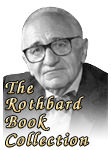This article is excerpted from Conceived in Liberty (1975), volume 1, chapter 32: “Mercantilism, Merchants, and ‘Class Conflict.'” An MP3 audio file of this article, narrated by Floy Lilley, is available for download.
The economic policy dominant in the Europe of the 17th and 18th centuries, and christened “mercantilism” by later writers, at bottom assumed that detailed intervention in economic affairs was a proper function of government. Government was to control, regulate, subsidize, and penalize commerce and production. What the content of these regulations should be depended on what groups managed to control the state apparatus. Such control is particularly rewarding when much is at stake, and a great deal is at stake when government is “strong” and interventionist. In contrast, when government powers are minimal, the question of who runs the state becomes relatively trivial. But when government is strong and the power struggle keen, groups in control of the state can and do constantly shift, coalesce, or fall out over the spoils. While the ouster of one tyrannical ruling group might mean the virtual end of tyranny, it often means simply its replacement by another ruling group employing other forms of despotism.
In the 17th century the regulating groups were, broadly, feudal landlords and privileged merchants, with a royal bureaucracy pursuing as a superfeudal overlord the interest of the Crown. An established church meant royal appointment and control of the churches as well. The peasantry and the urban laborers and artisans were never able to control the state apparatus, and were therefore at the bottom of the state-organized pyramid and exploited by the ruling groups. Other religious groups were, of course, separated from or opposed to the ruling state. And religious groups in control of the state, or sharing in that control, might well pursue not only strictly economic “interest” but also ideological or spiritual ones, as in the case of the Puritans’ imposing a compulsory code of behavior on all of society.
One of the most misleading practices of historians has been to lump together “merchants” (or “capitalists”) as if they constituted a homogeneous class having a homogeneous relation to state power. The merchants either were suffered to control or did not control the government at a particular time. In fact, there is no such common interest of merchants as a class. The state is in a position to grant special privileges, monopolies, and subsidies. It can only do so to particular merchants or groups of merchants, and therefore only at the expense of other merchants who are discriminated against. If X receives a special privilege, Y suffers from being excluded. And also suffering are those who would have been merchants were it not for the state’s network of privilege.
 Conceived in Liberty V...
Best Price: $35.13
Buy New $29.95
(as of 08:10 UTC - Details)
Conceived in Liberty V...
Best Price: $35.13
Buy New $29.95
(as of 08:10 UTC - Details)
In fact, because of (a) the harmony of interests of different groups on the free market (for example, merchants and farmers) and (b) the lack of homogeneity among the interests of members of any one social class, it is fallacious to employ such terms as “class interests” or “class conflict” in discussing the market economy. It is only in relation to state action that the interests of different men become welded into “classes,” for state action must always privilege one or more groups and discriminate against others. The homogeneity emerges from the intervention of the government in society. Thus, under feudalism or other forms of “land monopoly” and arbitrary land allocation by the government, the feudal landlords, privileged by the state, become a “class’ (or “caste” or “estate”). And the peasants, homogeneously exploited by state privilege, also become a class. For the former thus constitute a “ruling class” and the latter the “ruled.”[1] Even in the case of land privilege, of course, the extent of privilege will vary from one landed group to another. But merchants were not privileged as a class and therefore it is particularly misleading to apply a class analysis to them.
A particularly misleading form of class theory has often been adopted by American historians: inherent conflicts between the interests of homogeneous classes of “merchants” as against “farmers,” and of “merchant-creditors” versus “farmer-debtors.” And yet it should be evident that these disjunctions are extremely shaky. Anyone can go into debt and there is no reason to assume that farmers will be debtors more than merchants. Indeed, merchants with a generally larger scale of operations and a more rapid turnover are often heavy debtors. Moreover, the same merchant can shift rapidly from one point of time to another, from being a heavy net debtor to net creditor, and vice versa. It is impermissible to think in terms of fixed persisting debtor classes and creditor classes tied inextricably to certain economic occupations.
The merchants, or capitalists, being the peculiarly mobile and dynamic groups in society that can either flourish on the free market or try to obtain state privileges, are, then, particularly ill-suited to a homogeneous class analysis. Furthermore, on the free market no one is fixed in his occupation, and this particularly applies to entrepreneurs or merchants whose ranks can be increased or decreased very rapidly. These men are the very opposite of the sort of fixed status imposed on land by the system of feudalism.
[1] The differences between the Marxian attribution of “classes” to the market, and the confining of the concept to the “caste” or “estate” effects of state action, have been brilliantly set forth by Ludwig von Mises. See his Theory and History (New Haven: Yale University Press, 1957), pp. 112ff; and Socialism (New Haven: Yale University Press, 1951), pp. 328ff. Contrast the confusion in Lenin’s attempt to defend the Marxian jumble of estate and non-estate groups by the same concept of class. See V. I. Lenin, “The Agrarian Programme of Russian Social-Democracy,” Collected Works (Moscow: Foreign Languages Publishing House, 1961), 6:115.







